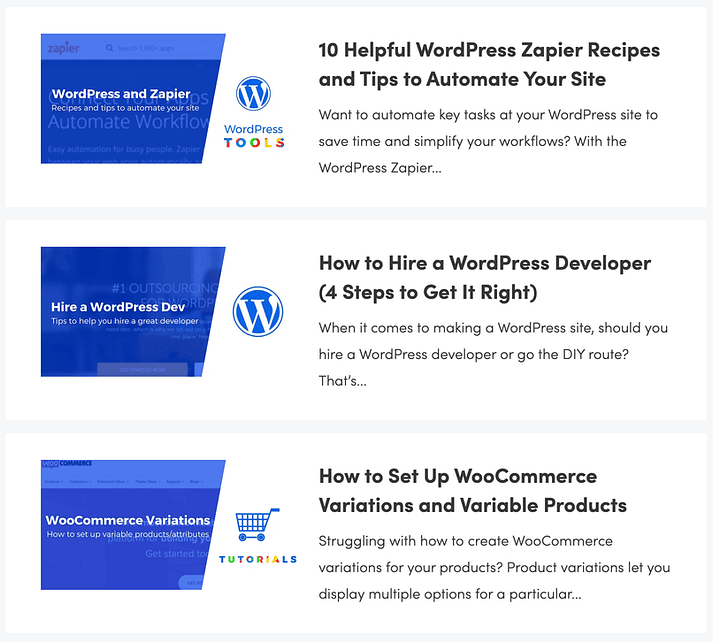It's tea party day in our neighborhood. YAYYYYY
Once a month the ladies of our neighborhood get together at a member's house. We've been doing this for almost 10 years and it is ALWAYS a blessing!!!!!!!
Today my daughter-in-law is hosting. I'm getting ready to go up to their house to watch the boys so that she can prepare in peace. lol
Over the years other ladies have commented that they wish they could have a neighborhood tea party group. I tell them to start with one. Invite one lady over and have tea. Make it truly special and the Lord will build it.
Last month I had 9 ladies and 4 children at my house for tea. I cannot put into words what a blessing those times together are. We have built our community around that closeness. This coming Sabbath our group is hosting a picnic for the rest of the neighborhood. We want everyone to feel welcome here.
It truly is up to us to make it happen. I pray that the Lord will speak through this post to ladies everywhere to begin a monthly neighborhood tea party. Hopefully this article will give you all some ideas of how to begin.
Happy tea day!!!
Dawn
Want to host a Women’s Ministry Tea Party at your small church? Read on for one small church’s story and 7 steps to hosting your own.
The Teaching & The Tea Party: Truth & Tea
Written by Felice Haggerty
Hello to all the gals who are interested in hosting a tea party! Below you will find the steps and plans that went into the tea party we hosted at our church. I hosted this event along with my pastor’s wife, Doreen Ross.
There are two parts to our party. I lead our ladies’ Sunday school class and so I used our 40 minutes as a teaching time. The teacup and saucer was our visual aid and useful for our analogies. We titled our tea party, TRUTH & TEA. The actual tea party was held after our morning worship service.
7 Steps To Host Your Tea Party
1. Pick A Date, Time And Place For The Party
We held our tea party after our morning worship service, while our teaching took place during our Sunday class. You could also incorporate the lesson during the tea.
2. Choose A Theme
Our color theme (purple/violet, white, green) was determined by our tablecloths, which were a dark purple/eggplant color. We found our decorations at stores like Joann, Hobby Lobby, and Michaels.

3. Create Invitations
Determine who you wish to invite and make up your invitations. We chose to invite all ladies and young ladies in the church. About three weeks ahead of the party, we began passing out the invitations to all the ladies. You will need time to pass them out (a personal invitation is often appreciated and remembered), and then mail them to those who you didn’t see. Remind them to mark their calendars.
4. Find Tea Cups And Saucers
If you don’t have them, you need time to find teacups and saucers, with no two alike, because we all are different. I took my 12-year-old granddaughter and we shopped local thrift stores and flea markets looking for bargains. What fun!
A couple of friends had lovely decorative teapots and shared them for the event. We used several as our containers for artificial flowers and greens to decorate the tables.
5. Plan Your Refreshments
Our beverages were various teas (I like the Republic of Tea company) and also water. We sliced lemons and limes and provided raw honey along with sugar cubes for the tea. Some folks might also take cream in their tea.
We chose finger sandwiches like hearty raisin bread with a cream cheese spread. Those got cut into 1/4’s (the crust was removed first). We also cut sandwich bread with heart-shaped cookie cutters and made with ham and cheese or turkey and cheese. Mayo and mustard were provided on the side.
For our sweets, we picked scones, bran muffins, and mint chocolate homemade cake, along with a large bowl of sliced oranges that went well with the other food.
In addition, we have a couple of folks who are gluten intolerant. For them, we made chicken and grape salad and served it on gluten-free crackers. We also purchased two kinds of gluten-free cookies. Another option is these gluten-free/dairy-free cookies. All the gluten-free was served on one large tray and labeled gluten-free.
(For our next tea party I found a recipe for individual pineapple upside-down cake made in muffin pans … they would look pretty on the table. Check out Pinterest for other food ideas.)
6. Decide On Table Settings
We used high-quality paper plates to hold our food. Our cloth napkins were made by a woman in the church who cut up old family tablecloths into napkin size and bound the edges with her sewing machine.
7. Upon Arrival, Each Woman Chooses Her Own Cup And Saucer
When the event is over, each woman takes home her cup and saucer as a visual reminder of our day together and our discussion.
(For our next tea, we will ask those ladies to bring their teacups and saucer back with them. For ladies who didn’t attend the first time, they get to choose theirs from the many that remained not chosen.)
Tea Party Teaching
We covered the “TEA” part of our TRUTH & TEA event above. Now here comes the “TRUTH” part. The teaching part of our event was filled with stories, teaching, and discussion.
3 Parts Of The Truth
First: All About The Tea Cup
Read The Tea Cup Story
A very expressive reader in our group read The Tea Cup Story, an analogy of how God creates beauty and purpose and fulfills His divine will through hardship and unknowns. Jeremiah 18:1-6 is the scripture basis for this story.
Mention The “Grog”
Added as a side note to this section, in a book by Lysa Terkuerst (It’s Not Supposed To Be This Way, pp 114-115) I found information on “Grog,” which is a type of dust made from previously broken pottery. When this grog is added to your clay, it makes a vessel both larger and stronger. It can also go through fires much hotter. And when glazed, the pottery has a much more beautiful artistic look. Grog is like the broken situations of our past which God incorporates in our lives to shape us into the likeness of Jesus.
The Tea Cup’s Handle
We asked what the purpose of the handle was (to grip, to avoid getting burned). The handle is like Jesus extending his righteous right hand to us. We can grip it, or hold it lightly. We can choose to not accept his hand and grab onto our situations (the cup) and possibly get burned.
God’s righteous right hand is described as having honor, power, authority, and strength. We had multiple scripture references about God’s righteous right hand, and we asked various ladies to look them up and read them out loud. The verses chosen were Isaiah 41:10, Exodus 15:6, and Psalm 63:8.
The Saucer’s Purpose
What is the saucer’s purpose? To catch spills, prevent stains, and transport your beverage. It is a place to rest your spoon and tea bag. In many years past, it was also a way to cool your tea by pouring it into the saucer and then drinking from your saucer.
We are told to lay our burdens down upon Jesus. His yoke is easy and His burden is light. Will you surrender your burdens? Will you allow Him to contain your spills?
Second: God Takes Our Shattered Pieces
A powerful portion of our morning truth contained a reference to Kintsugi Pottery. This method of repair to broken pottery gives the piece greater value and strength. It is a metaphor for how Jesus binds up our brokenness and makes us whole, giving us “scars of gold.” Click on this link for further details: Kintsugi Pottery.
I sought to find an actual piece of this pottery (eBay had it, but it was located in the UK – not enough time to have it arrive in the US) but ended up printing off a few photos to show the group what this pottery looked like after being repaired with gold. It’s truly stunning. God can take our shattered pieces and bind them together with His Spirit.
I touched on two kinds of brokenness. 1: People who wallow in their brokenness and never find healing for their pain, and 2: People who completely ignore their brokenness until it eventually destroys them from the inside out.
Reference Isaiah 42:3, Psalm 147:3, Isaiah 61:3, and Romans 8:28.
You have to allow Jesus to be the artist and the gold, to both heal and make you whole. Allow him to bind up the brokenness of your life.
Third: When The Tea Spills
Near the end of the tea party, I got the ladies’ attention and told them I had one more truth for them. There’s a story about what spills out of your cup referenced in several blog posts. You can read it in this post: What’s In Your Cup? The lesson comes here: What spills out of your cup depends on what is on the inside. Do peace, love, and joy spill out when you are jostled, or is there a splatter of anger, jealousy, or bitterness?
I changed the wording from coffee to tea and told it as a story, rather than reading it word for word. When I asked why I spilled my tea, I, of course, was told it was because I was bumped (I love when it works out as you intend). When I revealed the truth, one gal laughed and said “Hey, that’s a trick question.” It was the perfect story to finish our tea.
(Another great story that I chose not to include this time, can be found at the following link: Rest Stop For The Soul. For a tea party, of course, modify it a bit by changing coffee to tea and omitting the Christmas section if it’s not fitting. Since we are planning a tea in the future, I have another story to share!)
When Your Event Doesn’t Go As Planned
On the day of our tea party, I prayed on my 30-minute drive to church that God would keep me humble. Pride is insidious, and I didn’t want it to be part of our morning. My prayer was answered.
We had 15 in attendance (our church has an average attendance of 40). But even with our best-laid plans, once in a while something gets overlooked or just plain missed.
Just before we were ready to start, with all the food and goodies placed on the table, Doreen turned to me and asked, “Where is the tea?” Yes indeed, the tea – the tea I ordered special and left at home.
A couple of years ago, that mistake would have broken me to tears, and I would not have enjoyed a single moment as I tormented myself with thoughts like, “Look how you spoiled this event! How could you have been so dim as to forget the TEA for the TEA party … “
But I chose to stand at the head of the table and share that morning’s prayer request – that God would keep me humble – and how the Lord answered. The ladies laughed, we found some tea in the cabinet, and we just kept on going.
I thanked God for changing me and we made plans to have another tea. See how God uses even our mistakes for our good and His glory? (I’ll probably forget something else at our next party, but I bet you I will never forget the tea again.)
The best ideas come from all of you! Heroes in your own small churches, who show up week after week – perseverant, committed, and faithful. Felice Haggerty and Doreen Ross share their story from Windham Summit Bible Church in Windham Twp, Pennsylvania.

Doreen Ross: Doreen is the pastor’s wife at Windham Summit Bible Church in Rome, Pennsylvania. She has been involved in women’s ministry since 2012, leading Healing Journey classes, and continues to help with the women’s ministry at church along with Felice. Doreen is a Christian life coach and also loves coaching couples alongside her husband, Scott. She is a mom of 6 kids between 20-31 years old, with 12 grandkids, and 1 more due in July. The grandkids fill a special space that only they can fill. She loves seeing God transform lives! In addition, she loves plants, glamping (glamour camping/no tent), Bible studies, and being with her husband of 33 years.
Felice Haggerty: In 2015 the Lord put on Felice’s heart the directive to lead a women’s Sunday school class at Windham Summit Bible Church in Windham Twp, PA. In addition to this ministry, she has been blessed with a wonderful marriage of 39 years, a mom of two children, and a grandmother of one. By her family, she’s often called “The Dog Lady” because of her love for golden retrievers and breeding them. Felice also enjoys reading, gardening, and creative decorating.









